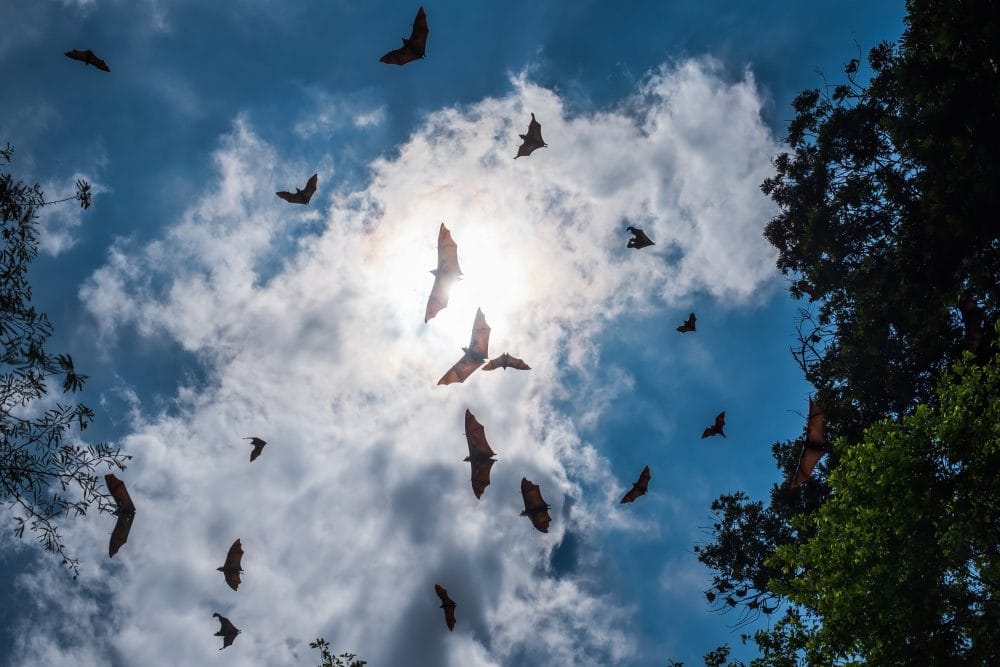
An outbreak of the Nipah virus in the Indian state of Kerala has made global headlines and creating an air of tension similar to that of the ebola crisis. Fears of a large-scale epidemic are abundant. However, is there any credibility to these claims?
What is the Nipah virus?
The Nipah virus is a zoonotic disease. This is a disease which is hosted in animals but can be transferred to humans. The Nipah virus is spread by bats (primarily large fruit bats). One of the most concerning aspects of the disease is its high mortality rate. In outbreaks between 1998 and 1999, about forty percent of people who went to the hospital for Nipah infections died.
The typical environment of the fruit bats that carry the disease are tropical rainforests. These bats occur across the South Asia region. Notable outbreaks occurred in Bangladesh before the recent outbreak in India. The disease has been shown to spread to humans via date palm sap. Bats lick the fresh date palm sap directly from the tree. This sap can then be contaminated with virally infected saliva. If a human comes into contact with this sap, the virus may transmit to the person.
Symptoms of the disease are non-existent for around fourteen days. Following this incubation period, an infected individual may have a fever, headache, and sometimes respiratory issues for anywhere from three to fourteen days.
These symptoms are followed by more severe complications, primarily involving the person’s mental state. Drowsiness, disorientation, and confusion are common at this stage. Symptoms can progress to a coma and lead to encephalitis (inflammation of the brain).
The next epidemic?
In recent years, alarm has spread regarding the disease due to its seemingly increasing capacity for human to human transmission. More than 600 cases of human to human transmission were reported between 1998 and 2015, according to the World Health Organization (WHO).
Every instance of Nipah infection in humans puts the virus under selection pressure to become more adept at surviving within a human host, says Stanford University epidemiologist and Nipah expert Stephen Luby. For example, if greater numbers of the virus become present in the respiratory tract, the virus could begin to transmit easily from human to human via coughing or sneezing.
The current outbreak in India is contained within Kerala. However, the prospect of the virus spreading via human to human transmission is causing widespread panic. To date, seventeen people have died due to the virus in this current outbreak.
One of the most recent deaths speculated to have been caused by the Nipah virus is that of soldier Seenu Prasad. He was on leave when he was admitted to a hospital in Kolkata with symptoms similar to Nipah infection. His bodily fluids have been sent to the National Institute of Virology in Pune. There, it can be ascertained if Prasad did indeed die of the virus.
Precautions are now being taken by other countries to prevent the outbreak from spreading outside of India. All fruits and vegetables imported from the state of Kerala have been banned in the United Arab Emirates (UAE) by the country’s Ministry of Climate Change and Environment (MoCCAE). Travel warnings have also been issued to any citizens of the UAE seeking to travel to Kerala. The state’s tourism industry, meanwhile, is reportedly facing a wave of booking cancellations as media reports about the outbreak gain traction. Many are disgruntled and accuse the media of overplaying the risk.
Whether the Nipah virus escalates to a large scale epidemic is yet to be seen. In its current state, this is unlikely. Transmission rates between people are very low. Cases are also few in number. As with all viruses, however, the potential for mutation remains high. As such, the threat the disease poses cannot be underestimated, especially considering its high mortality rate.

